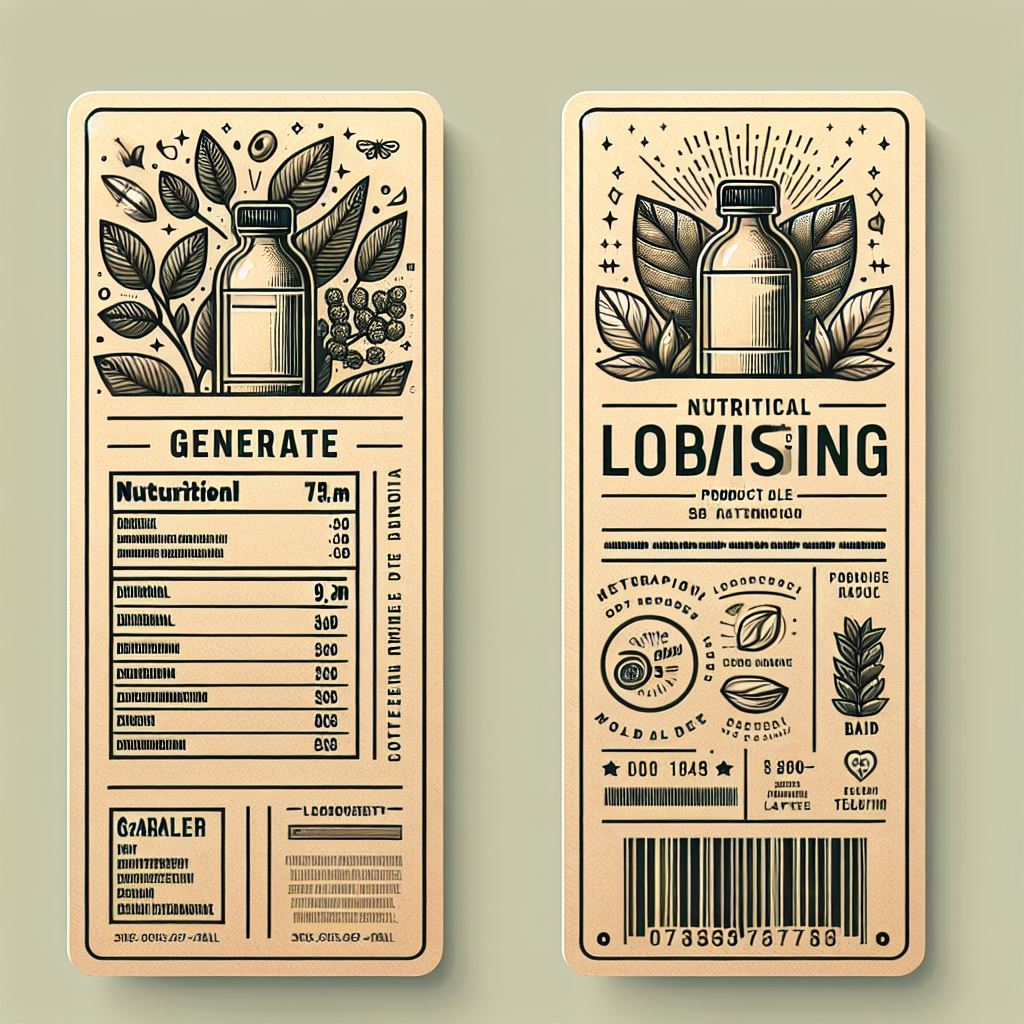Creative Design Developments for Tags and Labels: Stages and Costs Explained

Unlocking the Secrets: What is the Difference Between a Tag and a Label?

When diving into the world of Design development for tags and labels, understanding the distinction between a tag and a label is vital. You might wonder, "Aren’t they the same?" Well, lets clarify things! Imagine you’ve just bought a new pair of shoes online. The box arrives, and what do you see? Tags and labels! But they serve different purposes—lets uncover these secrets together.
Identifying Tags vs. Labels
- ✨ Tags: Think of tags as quick identifiers. They can be easily removed and often add value during promotions. For example, a sales tag on a shirt screams “50% OFF!” It attracts attention and helps you make a speedy purchase decision.
- ⭐️ Labels: Labels, on the other hand, are often permanent fixtures. They provide essential information about the product, including care instructions, brand name, and size. For instance, the care label inside your sweater is there to guide you on how to wash it properly.
Real-World Examples
Let’s say you own a boutique. If you include decorative tags on your clothes, potential customers might be drawn in by their design and the sale message. Meanwhile, the labels ensure customers know the fabric content and washing instructions, fostering trust in your brand. Having both elements in harmony can enhance the shopping experience and boost your sales! ⭐
The Impact of Quality Design
Quality matters in Design development for tags and labels. Did you know that 70% of customers believe that a labels design influences their buying decisions? A visually appealing design not only grabs attention but also indicates professionalism and attention to detail.
Choosing effective materials for tags and labels is just as important. High-quality fabrics for clothing labels withstand multiple washes, ensuring they dont fade or fray. On the other hand, tags made of sturdy cardboard can hold up well in a busy retail environment.
| Element | Purpose | Material Examples |
|---|---|---|
| Tags | Attracts customers, promotional offers | Cardboard, Plastic |
| Labels | Provides product information, care details | Woven, Printed Fabric |
| Tags | Personalized branding experience | Recyclable Paper |
| Labels | Reassures quality and authenticity | Synthetic Material |
| Tags | Encourages impulse purchases | Neon Cardstock |
| Labels | Regulatory compliance (e.g., "Contains Allergens") | Vinyl |
| Tags | Enhance unboxing experience | Recycled Materials |
| Labels | Visual appeal and design aesthetics | Embossed Materials |
| Tags | Messaging about sales or promotions | Gift Tags |
| Labels | Brand transparency and ethos | Eco-friendly Paper |
What Happens Without Proper Design?
Imagine a customer walks into your store. They are intrigued by a product, but they can’t find any labels with the care instructions. Would they purchase? Probably not! Customers need assurance in what they’re buying. A significant 65% of shoppers say they pay attention to labels before making a purchase decision. This means that neglecting proper design development for tags and labels might cost you potential sales. ⭐⭐
How Can We Help?
At artivale.com, we can assist you in understanding not just the differences between tags and labels but also provide you with a full range of Design development for tags and labels services. Our professional specialists, with over 20 years of experience, guarantee high-quality outputs tailored to your specific needs. Whether youre starting with a new brand or looking to redesign existing labels, we’re here for you! Get in touch with Alexandra today at [email protected] or visit our website to learn more!
Frequently Asked Questions
- What is the primary purpose of a tag? Tags primarily attract customers and offer promotional messages.
- How does a label differ from a tag? Labels provide detailed product information while tags are often promotional.
- Why is quality design important? Quality design can significantly impact consumer purchasing decisions.
- Can I customize my tags and labels? Yes, we offer tailored designs to fit your brands needs.
- What materials are best for labels? Woven fabric, vinyl, and eco-friendly paper are great choices.
- How can tags enhance my product? Tags can catch buyers’ attention and communicate sales or promotional messages.
- Do you offer services for both tags and labels? Absolutely! We specialize in both design and production.
- Whats the average cost for tag design? Prices can vary; check our website or contact us for detailed pricing.
- How long does the design process take? Typically, design completion varies based on the complexity of the project.
- Who can I contact for more information? Reach out to Alexandra at [email protected] for personalized assistance!
The Essential Stages of Design Development for Tags and Labels: A Comprehensive Guide

Creating effective tags and labels is more than just slapping on a design; it’s a meticulous process that requires careful planning and execution. If youre ready to dive into the world of Design development for tags and labels, you’ll want a clear understanding of the essential stages involved. Each step dramatically influences the final product, ultimately affecting how your customers perceive your brand. Let’s explore this comprehensive guide! ⭐
Stage 1: Research and Understanding
The first step involves understanding your target audience and the market. Who are you designing for? What trends are currently prevalent? For instance, if you’re targeting eco-conscious buyers, consider how sustainable materials can enhance your appeal. Did you know that almost 75% of consumers prefer brands that support sustainability? This means that your labels could significantly impact buyer decisions!
Stage 2: Concept Development
Once you’ve gathered your research, its time to brainstorm concepts. This stage allows for creativity to flow. Develop several design options using sketches or digital software. Ask questions like:
- ⭐ What colors resonate with my brand?
- ⭐ Are my tag designs visually appealing and informative?
- ⭐ Do they effectively communicate the products qualities?
Collect feedback from your team or focus groups. Adjust your ideas based on constructive criticism to hone in on the best concept.
Stage 3: Material Selection
Choosing the right materials is crucial in this design development process. Consider factors like durability, texture, and environmental impact. For example:
- ⭐ Paper Tags: Great for affordability and eco-friendliness.
- ⭐ Plastic Tags: More durable, but less eco-friendly.
- ⭐ Woven Labels: Perfect for clothing lines, providing a professional finish.
It’s essential to balance aesthetics and functionality. High-quality materials often lead to a more positive customer experience, suggesting a 60% increase in perceived value.
Stage 4: Design Execution
Using design software like Adobe Illustrator, bring your concept to life! Focus on layout, typography, and graphic elements that align with your brand identity. Consistency is key. Ensure your tags and labels are cohesive with your overall branding. ⭐⭐
Don’t forget to create prototypes using different materials and designs. Test these prototypes in real-world scenarios to see how they stand up in various environments, like retail or shipping.
Stage 5: Legal Compliance and Information Accuracy
While it might be the least glamorous part, legal compliance is essential. Double-check the information included on your labels to ensure its accurate and adheres to regulations. Depending on your industry, this can include:
- ⭐ Ingredients or materials used
- ⭐️ Safety warnings
- ⭐ Certification seals for organic or eco-friendly claims
Remember, a misleading label can lead to significant legal issues or tarnished brand reputation.
Stage 6: Production and Quality Control
Once your designs are finalized, it’s time for production. Select a reliable printer who specializes in tag and label production to ensure quality results. Look for options that offer:
- ⭐️ High-resolution printing
- ⭐ Robust materials
- ⭐ Eco-friendly printing options
Implement a quality control process to check for any defects during production. Remember, the presentation matters; even minor flaws can sour a customer’s perception! ⭐
Stage 7: Launch and Feedback Collection
With everything in place, it’s time to launch your products! Promote them through various channels, ensuring your tags and labels get the visibility they deserve. After a set period, gather feedback from your customers. An incredible 80% of consumers are likely to provide feedback on product labels when prompted.
This feedback is crucial for improving future designs and better understanding customer preferences. Utilize direct surveys, online reviews, or social media engagement to collect insights.
Stage 8: Iteration and Continuous Improvement
Finally, design development is an iterative process. Use the collected feedback to make enhancements. If customers find value in certain aspects of your tags but feel others could be improved, adapt accordingly. Regularly updating your designs keeps your brand fresh and relevant! ⭐
Why Choose Us?
At artivale.com, we have a team of professional specialists skilled in Design development for tags and labels. With over 20 years of experience, we guide you through every stage, ensuring your tags and labels are not just attractive but also functional and compliant. Ready to get started? Contact Alexandra at [email protected] or visit our website today!
Frequently Asked Questions
- What materials are commonly used for tags and labels? Common materials include paper, plastic, and woven fabrics.
- How long does the design process typically take? It can vary, but you might expect 4-6 weeks from concept to production.
- Can I customize my tags and labels? Absolutely! Customization is a key part of the design development process.
- What should I consider when selecting materials? Consider durability, appearance, and environmental impact.
- What role does quality control play? Quality control ensures your labels and tags are defect-free before hitting the market.
- How do I gather feedback post-launch? Use surveys and social media platforms to engage with customers.
- Do you assist with legal compliance? Yes, we guide you on important regulations regarding product labeling.
- How frequently should I update my tags and labels? Regular updates based on feedback and trends are recommended for relevance.
- What makes your services stand out? We provide comprehensive solutions in one place, making your design process seamless!
- How do I get started with a design project? Contact us directly for a consultation, and well guide you through the process!
How Much Does Tag Design Cost? Understanding Your Investment in Quality

When it comes to Design development for tags and labels, understanding the costs involved is essential for making informed decisions. Investing in quality design pays off, as it can significantly influence customer perception and ultimately, sales. But what exactly should you anticipate when it comes to tag design expenses? Let’s break it down! ⭐
Factors Influencing Tag Design Costs
The cost of tag design can vary widely based on several factors. Here are the key elements that may affect your total investment:
- ⭐ Complexity of Design: More intricate designs require more time and resources, resulting in higher costs.
- ⭐️ Material Selection: The choice of materials plays a major role. Eco-friendly options tend to be pricier but can enhance your brands appeal.
- ⭐ Quantity Ordered: Generally, larger orders decrease the price per unit due to economies of scale.
- ⭐⭐ Designer Experience: Collaborating with a seasoned designer might come with a premium, but their expertise often results in a superior final product.
Typical Pricing Structures
To give you a clearer picture, here are some typical price ranges for various components of tag design:
| Service | Price Range (€) |
|---|---|
| Basic Tag Design | 70 - 150 |
| Customized Tag Design | 150 - 320 |
| Material Upgrades (Eco-friendly) | 20 - 50 extra per 100 units |
| Production Costs (per 100 Tags) | 100 - 300 |
| Design Revisions | 50 - 100 |
| Prototyping Costs | 50 - 200 |
| Legal Compliance Review | 100 - 250 |
| Shipping Fees | Varies based on weight and destination |
While the initial investment may seem daunting, remember that quality design translates into customer trust. A well-designed tag can increase perceived value and ultimately help you command higher prices. In fact, studies show that professionally designed tags can boost sales by as much as 30%! ⭐
The Long-Term Benefits of Investing in Quality Design
So, why should you invest in quality tag design? Here are some compelling reasons:
- ⭐ Brand Identity: Well-designed tags reflect your brand. They enhance recognition and establish trust with consumers.
- ⭐️ Increased Sales: A polished appearance attracts customers, and when customers feel good about a product, they are likely to buy more.
- ⭐ Customer Loyalty: Quality design can lead to repeat purchases, creating loyal customers who trust your brand’s quality.
- ⭐ Reduced Returns: Clear information reduces confusion, helping customers make informed choices, thus minimizing returns.
Breaking It Down: Real-Life Scenarios
Let’s look at a couple of real-life scenarios to further understand how tag design costs can play out:
Scenario 1: A New Eco-Friendly Clothing Brand
Imagine you are launching an eco-friendly clothing line. You decide to invest in high-quality, biodegradable tags. While the initial tag design costs are around €150, you spend an additional €50 for eco-friendly materials. If your unique selling proposition is sustainability, your sales could increase by 30%, totaling €1,500 in extra revenue in your first month!
Scenario 2: A Gourmet Food Product
A gourmet food label requires a well-executed design that reflects quality. You might spend €200 on design and production. Imagine your product appears on a local store shelf alongside competitors. A well-designed tag can lead to 40% more sales, significantly outweighing the initial investment. If each sale nets €10, that’s €800 in revenue for just the first month!
Conclusion
Understanding how much tag design costs can guide you in making informed choices about your investment. Exceptional design can pay dividends in brand loyalty and customer satisfaction. At artivale.com, were here to help you navigate the costs while ensuring your tags and labels stand out. Our professional specialists can guide you through the entire design process, delivering quality that will resonate with your customers. Ready to invest in your brand? Contact Alexandra at [email protected] or visit our website today!
Frequently Asked Questions
- What is the average cost for a basic tag design? Basic tag designs typically range from €70 to €150.
- Are eco-friendly materials more expensive? Yes, they tend to add an extra fee of €20 to €50 per 100 units.
- How can quality design impact sales? A well-designed tag can increase perceived value, boosting sales by up to 30%.
- What should I budget for production costs? Production costs can range from €100 to €300 per 100 tags.
- Do I need a legal compliance review for my tags? Yes, ensuring accuracy and compliance typically costs between €100 to €250.
- How long does it take to complete the tag design? Depending on complexity, expect around 4-6 weeks.
- Can I get a custom tag design? Absolutely! Custom designs can be tailored to fit your brand’s unique identity.
- What if I need revisions? Design revisions may incur additional costs, ranging from €50 to €100.
- How do I gauge the value in investing more? Enhanced design leads to better customer perception, loyalty, and ultimately higher revenue.
- How can I get started with my tag design? Contact us at artivale.com for a free consultation!
Submit your details in the form and our team will personally get in touch with you within the next business day to discuss your needs
